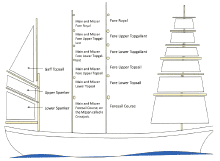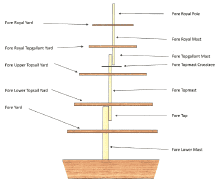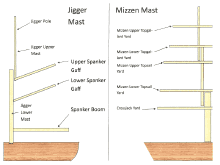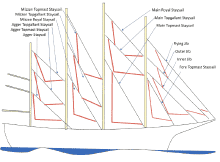
 Custom Search
|
|
| sails |
| plans |
| epoxy |
| rope/line |
| hardware |
| canoe/Kayak |
| sailmaking |
| materials |
| models |
| media |
| tools |
| gear |
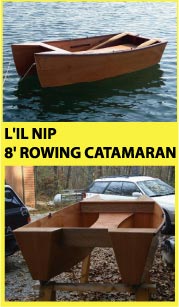 |
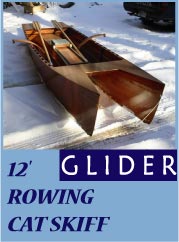 |
| join |
| home |
| indexes |
| classifieds |
| calendar |
| archives |
| about |
| links |
| Join Duckworks Get free newsletter Comment on articles CLICK HERE |
|
|
| Out There |
by Paul Austin - Dallas, Texas - USA Classic Ship Construction Notes - Part Six |
 |
Part One - Part Two - Part Three - Part Four - Part Five- Part Six Spars and RiggingNow with the rigging we come to the aspect of the ship upon which modelers spend much of their time. In the great age of sail, these ships were actually under canvassed for their great length. If they were not under canvassed, the sails would be so tall they couldn't be controlled in strong ocean winds and storms. The rigging became complicated in an attempt to control the sails in a variety of wind and storm conditions with fewer and fewer men. Lines were added to adjust and set the sails, while the men did other work such as fishing, whaling or delivering commercial cargo. A good ship designer could save the lives of the men simply by where he placed certain gear, tackle, lines or the windlass. We will begin with the example of a four masted fully rigged ship. The names of the masts, spars and sails for the foremast, mainmast and mizzen are the same, so here I've illustrated the foresails and jigger sails.
In the illustration above I have the sails on the foremast looking as if they were fore and aft; they are not. These are the sail names for a square-rigger.
Here in the second and third illustration are the names of the mast sections and spars. I've put the mizzen mast in because the mizzen 'course' is called the crossjack.
This is the standing rigging for masts and sails. BowspritAnd finally, the bowsprit. I have included the bowsprit because 6 stays depend on the bowsprit to keep them taut. This illustration is for schooners.
Now here we have a closer look at a square rigger's bowsprit. The sqaure rigger's bowsprit was heavy, thick and loaded with metal collars, shackles, and turnbuckles. Often more men were lost at sea by having to get out on the bowsprit to secure or untangle lines than those who died otherwise. Nets came in under the men, but the original reason for fishing schooners with no bowsprit was simply to get them men back to their families. If anyone has read my article on the fishing schooner Adventure, you'll see a fishing schooner with no bowsprit. It just looks safer.
The whisker pole was not mandatory on all ships. This is especially true when schooners took over for square riggers. The bowsprit didn't have as much pressure on it. On some ships the foresail halyards weren't secured on the deck at all, but on the bowsprit. As times changed, rigging details did also. These are the methods for securing spars to the mast. The ropes would get loose after a while, especially after squalls and rain soaked them. The metal collars scraped the wood masts, but they were secure. The great disadvantage of the metal collars is they kept the sails where the multitude of lines would interfere with the wind. This is windage, and square riggers had bad windage. This problem was never solved, we simply went to fore and aft sails.
Francis Herreshoff tried to eliminate as much windage as possible with his 'cranes' for Marco Polo. These set the sails further from the mast and rigging.
***** This is the end of my series on ship parts of wooden ships. I have loved doing this. I didn't show more than 70% of the ship parts of these great beauties, as the interiors are of no interest to modelers. I have been gathering material for two years, so the books I have used are: Elements of Wood Ship Construction, William Curtis Paul https://crossingthoughts-paul.blogspot.com.au https://twoclassypeople.blogspot.com.au ***** |
